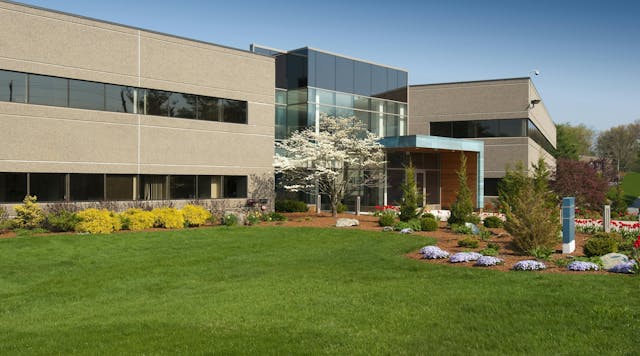The Main Principles Of Hilton Head Landscapes
The Main Principles Of Hilton Head Landscapes
Blog Article
Hilton Head Landscapes - Truths
Table of ContentsHow Hilton Head Landscapes can Save You Time, Stress, and Money.All About Hilton Head LandscapesThe Facts About Hilton Head Landscapes Uncovered6 Simple Techniques For Hilton Head LandscapesHow Hilton Head Landscapes can Save You Time, Stress, and Money.Hilton Head Landscapes Fundamentals ExplainedThe 10-Minute Rule for Hilton Head Landscapes
Line produces all forms and patterns and can be made use of in a range of methods the landscape. Line in the landscape is produced by the edge in between two materials, the rundown or silhouette of a type, or a lengthy straight feature. Lines are a powerful tool for the developer because they can be made use of to create an unlimited range of shapes and kinds, and they regulate movement of the eye and the body.

Lines can have one or even more qualities, such as those described listed below, but they commonly serve various functions. Figure 1. Lines in the landscape - landscapers in bluffton sc. The properties of lines determine exactly how individuals react to the landscape, both mentally and literally. Straight lines are structural and powerful; they produce an official personality, are typically related to a symmetrical design, and lead the eye straight to a focal factor.
The Ultimate Guide To Hilton Head Landscapes
Straight lines are usually found in hardscape sides and product. Bent lines develop a casual, all-natural, loosened up character that is associated a lot more with nature and asymmetrical balance. Curved lines move the eye at a slower rate and add secret to the area by producing hidden sights. Upright lines move the eye up, making an area feel bigger.
Vertical lines in the landscape include high, narrow plant material, such as trees, or high structures, such as an arbor or a bird house on a post. Straight lines relocate the eye along the ground plane and can make a room feel larger. Low lines are more suppressed and develop a feeling of rest or repose.
4 Easy Facts About Hilton Head Landscapes Shown
Reduced lines are created by low garden wall surfaces, walkways, and short bushes. Lines are utilized to attract types on a plan. In strategy sight, they define plant beds and hardscape locations. Lines are likewise developed by the vertical forms of constructed features and plant product. There are three key line types that produce form in the landscape: bedlines, hardscape lines, and plant lines.
Bedlines link plant product to your house and hardscape due to the fact that the eye follows the line, relocating the look through the landscape. Hardscape lines are produced by the side of the hardscape, which delineates the developed framework. Line can additionally be created by lengthy and narrow materials, such as a fence or wall surface.
Hilton Head Landscapes Things To Know Before You Get This
Type is discovered in both hardscape and plants, and it is generally the dominant visual aspect that spatially organizes the landscape and typically figures out the style of the garden. The kind of frameworks, plant beds, and yard ornaments likewise figures out the general type theme of the garden. Formal, geometric forms include circles, squares, and polygons.
Plants create kind in the garden through their outlines or silhouettes, but kind can additionally be defined by a void or negative room in between plants - hilton head landscapers (https://hiltonheadlandscapes.godaddysites.com/f/transform-your-outdoor-space-with-hilton-head-landscapes). Circles can be complete circles, or they can be split into fifty percent circles or circle segments and combined with lines to develop arcs and tangents
Hilton Head Landscapes Can Be Fun For Everyone
Circles are a solid layout type due to the fact that the eye is always attracted to the center, which can be utilized to highlight a focal factor or link various other kinds. Circular types in hardscape and grass panels.
The square form can likewise be fractional and used repetitively to develop a grid pattern. Unlike circles, squares are more powerful on the edges, which can be lined up or overlapped to produce one-of-a-kind patterns and more complicated types. Polygons are many-sided forms with straight edges. Triangles, as an example, are three-sided polygons.
Twisting lines often imitate the all-natural training course of rivers or streams and can be referred to as smooth lines with deeply bent wavinesses. Twisting lines (Number 3) work well for paths, plant bedlines, and completely dry stream beds. Meandering lines can include passion and enigma to a yard by leading visitors around edges to uncover brand-new sights and rooms.
Hilton Head Landscapes Fundamentals Explained

Number 5. Fragmented sides: stepping stones in pathway. Form is the most long-lasting quality of a plant (bluffton landscaping). https://www.provenexpert.com/steven-gonzales/?mode=preview. Common plant forms are well established and standardized, as kind is the most constant and well-known attribute of plants. Kind can also be developed with the massing of plants, where the overall mass creates a different kind than a private plant.
An extremely different kind has to be made use of with careone or more job well as a focal point, yet also lots of wreak havoc. Natural plant forms, instead of over-trimmed kinds, must develop the mass of the composition. The significance of overall type is basically reliant on the viewing perspectivethe type of a tree can appear fairly different to a person standing under the canopy versus watching the tree from a distance in an open field.
A Biased View of Hilton Head Landscapes
Plant forms additionally develop and specify the void or open areas between the plants, producing either convex or scooped kinds in deep spaces. High-arching tree branches normally develop a concave open space under the branches, and a round canopy with low branches fills the area to develop a convex type in the open area under the tree.

Report this page